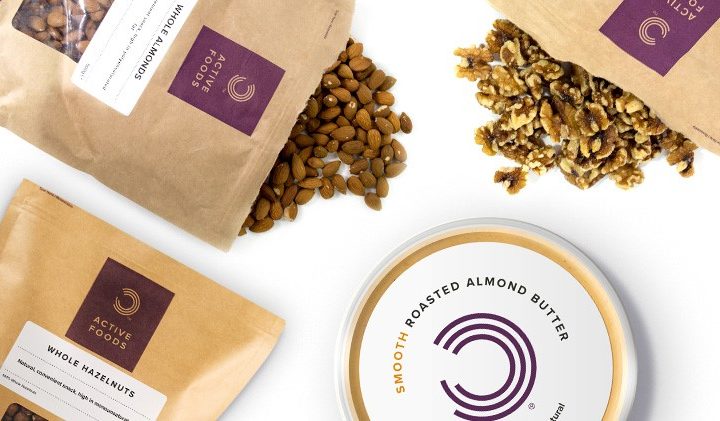In the last 10 years, nuts have become an increasingly popular food within people’s diets. In this article we will give you an insight into the best nuts for you, how you can consume them and then explain the reasons why nuts are so good for us.
TYPES & FORMATS OF NUTS
Firstly, don’t just think the only way to consume nuts is from a bag. Don’t also think there are only a few good ones, or that not all of them are good for you. This is false. Generally, all nuts are beneficial as long as what you add to them isn’t bad for you.
5 OF THE BEST NUTS TO INCORPORATE IN YOUR DIET
- Peanuts (not salted)
- Cashews
- Almonds
- Hazelnuts
- Pistachios
All of these are great nutritious nuts that can be consumed in various ways.
8 OF THE BEST WAYS TO CONSUME NUTS:
- Spreads
- Ground
- Flaked
- Grated
- Pressed (for their amazing oils)
- Roasted
- Blended (into drinks)
- Bars (as an ingredient)
NUTRITIONAL BENEFITS OF NUTS
Nuts are nutrient dense foods containing unsaturated fats, high-quality vegetable protein, fibre, vitamins and minerals. They also contain a lot of beneficial compounds (different chemical elements) with super complex names which assist bodily functioning. If you want to know what these are, see the paper referenced! (Ros, 2010).
The fibre nuts contain ranges from 4 to 11 g per 100 g. In standard servings (1/3 cup) nuts provide 5-10% of daily fibre requirements (Ros, 2010).
Nuts have high levels of protein, especially the amino acid (the building blocks of protein) L-Arginine. Due to the high unsaturated (healthy) fats, nuts also provide a lot of energy, perfect for individuals who like to exercise!
HEALTH BENEFITS OF NUTS
OVERVIEW
Research has consistently shown that nut intake has a cholesterol-lowering effect, even in individuals with normal, healthy diets. There is also emerging evidence of beneficial effects on stress, reactivity and inflammation within the blood vessels which will improve blood flow around the body (Ros, 2010). Studies have also associated nut consumption with a reduced rate of heart disease and gallstones (Ros, 2010). There is also some evidence suggesting beneficial effects on high blood pressure and reducing fat storage.
All of this evidence illustrates there are significant physiological benefits for including nuts within your diet. They have both short term effects such as cholesterol lowering and also long term benefits.
FATS
Contrary to expectations, despite the high energy density of nuts, evidence suggests that their regular consumption neither contributes to obesity nor increases the risk of developing diabetes (Ros, 2010).
The saturated fatty acid content is low (4-16%) and nearly half of the total fat content is made up of unsaturated fat (Ros, 2010). These fats are healthy fats that the body needs, so don’t be put off by their unsaturated fatty acid levels!
L-ARGININE
The L-Arginine that nuts have in abundance is the amino acid that triggers nitric oxide in the body. Nut intake might help improve vascular reactivity as it causes the arteries to dilate and increase in size, allowing greater blood flow to working muscles and organs due to the release of nitric oxide from the L-Arginine (Huynh & Dusting, 2006).
MINERALS
Compared to other common foods, nuts have an optimal nutritional balance with respect to minerals; calcium, magnesium, and potassium (Ros, 2010).
This is beneficial for the protection against bone weakening, high blood pressure, insulin resistance (prediabetes), and overall cardiovascular risk (Cordain et al, 2005).
So either way, you can’t really go wrong by incorporating nuts into your diet.
REFERENCES
Brufau, G., Boatella, J. and Rafecas, M., 2006. Nuts: source of energy and macronutrients. British Journal of Nutrition, 96(S2), pp.S24-S28.
Cordain, L., Eaton, S.B., Sebastian, A., Mann, N., Lindeberg, S., Watkins, B.A., O’Keefe, J.H. and Brand-Miller, J., 2005. Origins and evolution of the Western diet: health implications for the 21st century. The American journal of clinical nutrition, 81(2), pp.341-354.
Huynh, N.N. and Chin‐Dusting, J., 2006. Amino acids, arginase and nitric oxide in vascular health. Clinical and experimental pharmacology and physiology, 33(1‐2), pp.1-8..
Segura, R., Javierre, C., Lizarraga, M.A. and Ros, E., 2006. Other relevant components of nuts: phytosterols, folate and minerals. British Journal of Nutrition, 96(S2), pp.S36-S44.
